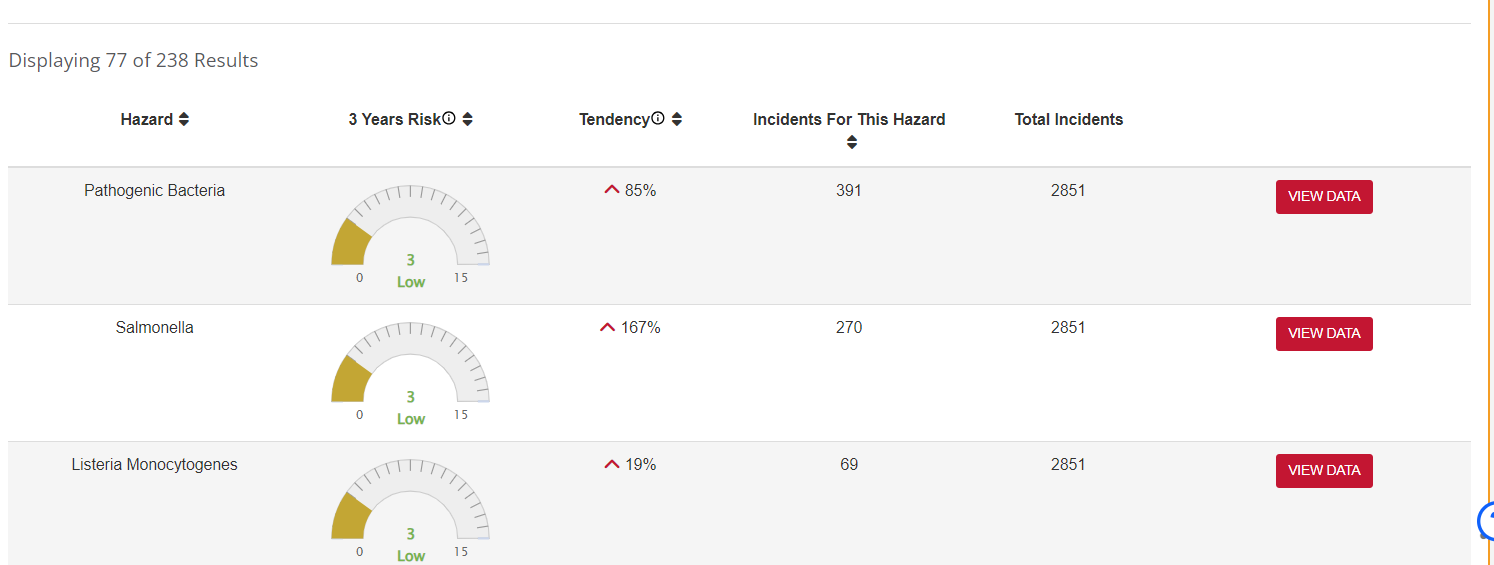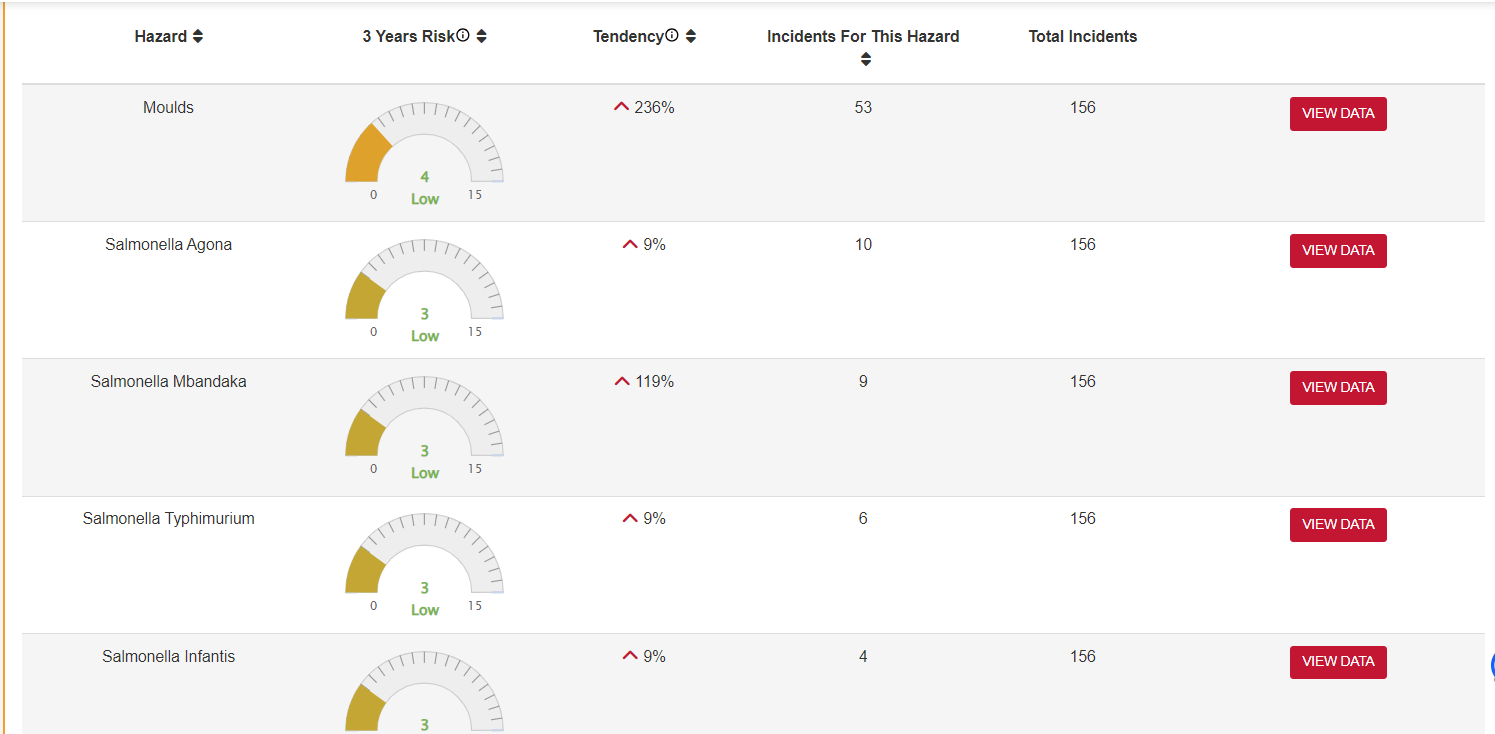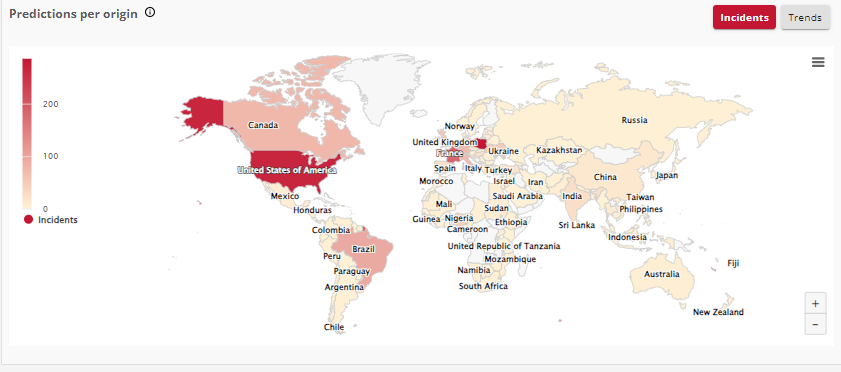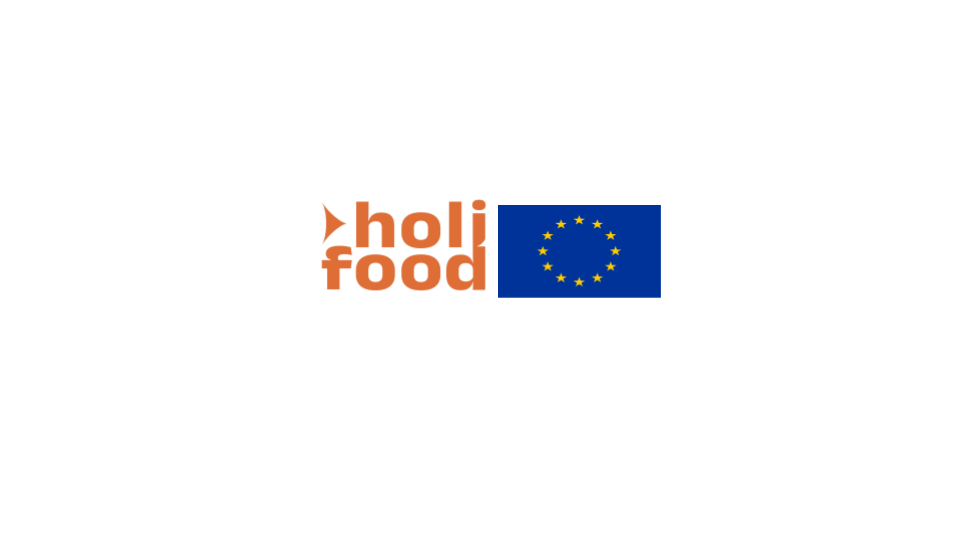
The case of Cereal: an analysis of the recent recalls
Few weeks ago the Quaker Oats Company published a recall announcement regarding multiple of their products that were potentially contaminated with Salmonella spp.. This announcement was revised and expanded almost a month later to include more products that could be contaminated with the foodborne pathogens.
Following the second, revised recall announcement by the company, the CFS (Centre for Food Safety) in Hong Kong posted an announcement urging the public to not consume various imported cereal products which are suspected to be contaminated with Salmonella spp..
News of this recall has spread and there seems to be an increased worry about the risk of Salmonella spp. in cereal products highlighted by the updated recalls and announcement by CFS.
In order to better understand the increasing risks of Salmonella spp. for cereal products we utilized FOODAKAI, the AI and Predictive Analytics Platform, to examine the risk for the product category.
Indeed, the risk of Salmonella spp. has been projected to increase by 167% regarding the cereal in the next few months.

Consequently, the risk of various types of Salmonella has also increased in animal feed products, the nutrition of which is heavily based on cereal products.

Additionally, as shown below US, Poland and France are the countries that according to FOODAKAI are forecasted to have an increased number of incidents pertaining to Salmonella spp..

With highly accurate forecasts on the hazards that are projected to increase over the next months, food & beverage companies could drastically enhance proactive risk mitigation measures by incorporating emerging, new and increasing risks into their critical risk intelligence analysis.
Salmonella contamination
According to the Centers for Disease Control and Prevention (CDC), the symptoms of a Salmonella infection unveil themselves over a broad temporal spectrum, ranging from 6 hours to 6 days post-initial exposure. The ensuing duration of these symptoms typically spans 4 to 7 days, further emphasizing the acute and impactful nature of the infection.
Common symptoms include diarrhea, stomach cramps and abdominal pain, sudden fever, vomiting and nausea. Beyond these commonplace symptoms, certain strains of Salmonella possess the ability to invade various bodily systems, leading to potentially severe complications. These complications may affect the urinary system, bloodstream, bones, joints, and even the nervous system, including the spinal fluid and brain. Invasive infections of this nature can result in prolonged illness, necessitating intensive medical intervention.
It is noteworthy that individuals afflicted by Salmonella infections may also contend with reactive arthritis, characterized by persistent joint pain. This form of arthritis can endure for months or even years, potentially evolving into chronic arthritis. The long-term impact underscores the critical importance of not only addressing the acute phase of Salmonella infection but also recognizing and managing potential complications to ensure the overall well-being of affected individuals.
Interested in seeing in action how you can benefit from forecasts for your supply chain? Then book a demo and see it action.
Want to receive helpful food safety intelligence in your inbox?
This report was prepared under the HOLiFOOD project.
HOLiFOOD is a project that has received funding from the European Union’s Horizon Europe research and innovation programme HOLiFOOD (Grant Agreement Number 101059813). Views and opinions expressed are, however, those of the author(s) only and do not necessarily reflect those of the European Union or European Research Executive Agency. Neither the European Union nor the granting authority can be held responsible for them. Project website: https://holifoodproject.eu









